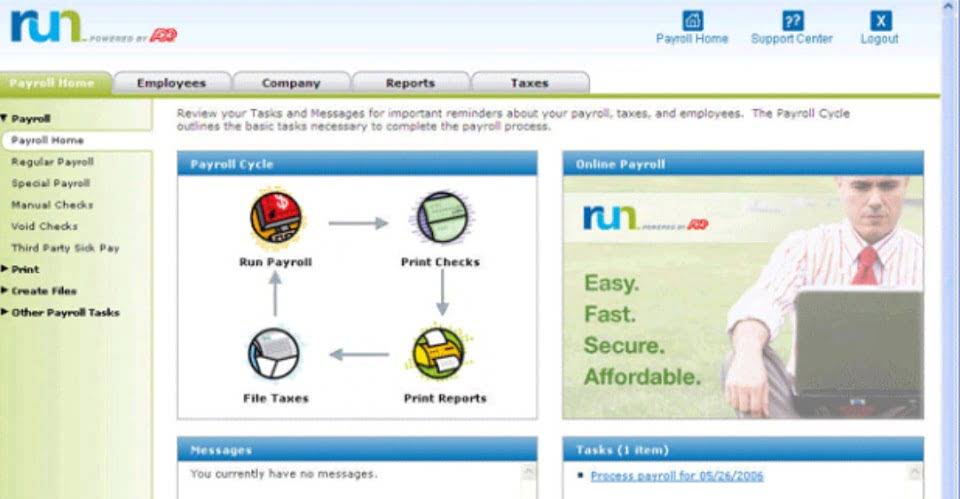
Companies that have had success with ERP have taken the time to think about how their processes work and how they can best be integrated before “automating” them. The executive sponsor should also be advised by an organizational change management executive, as ERP implementations result in new business processes, roles, user interfaces, and job responsibilities. Reporting to the program’s executive team should be a business project manager and an IT project manager.
So, what is enterprise resource planning?
It includes MRP features but also connects other areas of the business — like finance, HR, procurement, and customer service — into a single system. Businesses that choose cloud-based ERP use software hosted on the internet by an outside vendor. Many cloud systems follow a model called Software as a Service (SaaS), where companies pay a monthly or yearly fee to access the tools.
SAP S/4 HANA Cloud:
Optimized business processes, reduced administrative work, elimination of duplication and, increasingly, automation can enable a company to use ERP systems to increase productivity by as much as 18 percent according to IDC. Hybrid ERP combines cloud and on-premises solutions, giving businesses the flexibility to store sensitive data locally while leveraging cloud-based applications for other functions. An ERP can be used to manage the procurement of goods and services, inventory management and supply chain planning. In short, the role of an ERP is to provide definitions of erp a unified, real-time view of company data, automate tedious operational processes and improve the efficiency and performance of the company as a whole. Material Requirements Planning (MRP) – A system designed to react to demand for raw materials and finished goods. It ensures that enough materials are available for production, enough finished products are available to deliver to customers, and that the lowest amount of materials and products needed are on hand.

Centralized Database
- Top management is accountable for formulating a vision and plan, as well as motivating users to accomplish objectives.
- Electronic Data Interchange (EDI) is the concept of businesses electronically communicating information that was once communicated manually on paper that uses an automated electronic format between business partners.
- Enterprise Resource Planning serves as the central pillar of modern business management, seamlessly weaving together every facet and function of an organization into a harmonious symphony.
- Manufacturing ERP software integrates core business processes with manufacturing processes, allowing full visibility and control over a manufacturing business and production objectives.
- ERP also integrates with front-office applications to build holistic views of customers, including customer relationship management (CRM) solutions.
The software requires a great deal of time to set up, as well as to convert a company’s existing data into it. contribution margin Also, because ERP systems can only be configured in a limited number of ways, most companies will find that they must alter their operating procedures to fit the software, rather than altering the software to fit their procedures. These changes call for a large training expenditure, and may result in resistance from those employees accustomed to the old system.

What’s the difference between ERP and financials?

Enterprise Resource Planning (ERP) software is a comprehensive business management solution that enables companies to manage their core business processes in one system. ERP integrates all aspects of a company’s operations into a cohesive system, from accounting and financials to sales and marketing. ERP software consists of business applications that are all connected and share one common database, therefore decreasing the number of resources necessary to run the business end to end. ERP also integrates with front-office applications to build holistic views of customers, including customer relationship management (CRM) solutions. Additionally, cloud-based ERP applications are often embedded with next-generation technologies, such as the internet of things (IoT), blockchain, AI, machine learning, and digital assistants.

Each of these modules collects and stores data on the company’s activities, then uses this data to automate and simplify these processes. Plain vanilla, template-based modules chosen by the client are provided at a fixed price and implemented over a fixed timetable. ECompany installed fully functional ERP modules for materials management, function planning, finance, and online retailing in three weeks for less than $200,000. Interactive Apparel implemented SAP’s materials management, sales and distribution, warehouse Oil And Gas Accounting management, and financial modules in nine weeks for less than $150,000. Small-market and midsize-market companies with time and budget constraints have an especially hard time implementing ERP.
Advantages of ERP for Business
- Enterprise resource planning (ERP) is software developed to manage and optimize business operations and processes.
- These consulting firms should be unaffiliated with any ERP vendor and can therefore focus on helping their client create detailed demo scripts so software vendors can illustrate how their product will meet specific needs.
- ERP helps and supports the analysts to manage and monitor Inventory, supply chain, Human Resources, finance, procurement, and project and product life cycle.
- Because they are less robust, small business ERP solutions are often easier to implement and require less customization compared to enterprise-level ERP systems.
- However, in the past decade or so, many large enterprises have moved to a hybrid model, adding cloud modules for HCM, finance and SCM.
ERP is highly customizable, though there are common methodologies across the industry. In the past, implementing an ERP software system required a large investment in time and money that only large companies could afford, though it typically improved productivity drastically. By addressing these challenges head-on, businesses can successfully implement an ERP system that streamlines operations, enhances productivity, improves decision-making capabilities, and ultimately drives growth.
